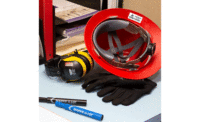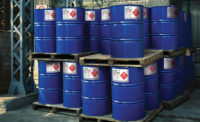Why is the exposure risk for manufacturing workers so high?
Manufacturing employees, especially those who work on the line, have a high risk of exposure to the novel coronavirus simply due to the nature of the job. Firstly, the distance between workers on assembly and production lines is often minimal.
Secondly, shifts tend to be long; between 8 and 12 hours. That means workers have prolonged contact with each other. Lastly, there are a lot of communal surfaces, from workstations to tools to break areas. Germs can be spread through airborne droplets from a cough or sneeze as well as contaminated surfaces.
This post will help you tackle the challenges listed above head on, using recommendations from the CDC and OSHA.
What can you do to help protect your employees?
Designate a coronavirus safety coordinator who will stay up to date on recommendations from the CDC and OSHA as well as state and county guidelines. This person can help implement your COVID-19 assessment and control plan before your facility reopens as well as lead ongoing assessments.
Use the hierarchy of controls method (recommended by the CDC and OSHA) as the base for developing your coronavirus safety plan. In this case it could include: eliminate the hazard, install engineering controls, put administrative controls into action and implement appropriate sanitation, cleaning and disinfection practices.
1. Screen and monitor returning workers to help eliminate hazards
Screening for COVID-19 symptoms reduce the potential for exposure by removing the hazard as quickly as possible. Here are the basics of an effective screening process to help protect your workers:
- Set up a station to screen all personnel before entrance to your facility
- Verbally screen by asking specific questions about COVID-19 symptoms including cough, shortness of breath and loss of taste or smell in the last 24 hours
- Verbally screen by asking about contact with coronavirus patients and high-risk travel
- Check temperatures for 100.4°F or higher or reports of feverish feelings such as chills
- Identify screened employees with coronavirus screening solutions that range from color-coded visual identification to barcode-capable wristbands for digitally tracking access
- Anyone who’s screening results indicate they may have COVID-19 should be separated from others and sent home
2. Increase distance between workers with engineering controls
Engineering controls change the environment where people work. Here is a short list of engineering controls you can implement to specifically to help reduce germ spread due to manufacturing employees working closely together:
- Reconfigure workstations and break area seating to be at least 6 feet apart (in all directions) wherever it is possible to do so
- Where reconfiguring is not possible, consider installing physical barriers such as strip curtains, clear acrylic dividers or other impermeable dividers and/or partitions
- Place hand-sanitizing stations in multiple areas
- Manage facility temperature to avoid overheating without the use personal cooling fans (which can distribute droplets from a cough or a sneeze)
3. Mitigate prolonged contact with administrative controls
Administrative controls change how people work. One of the most effective ways to use administrative controls to help protect manufacturing workers is to rearrange schedules for shifts and break times to avoid crowding.
A carefully planned schedule can help avoid many employees clocking in and out, taking breaks and using locker/changing rooms at the same time. Here are a few more admin controls you can implement to help mitigate prolonged contact among returning employees:
- Limit access to essential workers only
- Get rid of non-essential meetings
- Use safety signage to communicate guidelines for social distancing, handwashing techniques and PPE use
- Consider distributing respirator and non-medical face masks facility-wide
- Digitally manage and track the influx of COVID-19 PPE and other coronavirus safety supplies with barcoded PPE asset tags
- Use adhesive floor signs and other floor markings to help personnel maintain 6 feet spacing whether stationary or moving through aisles and walkways
4. Implement appropriate sanitizing, cleaning and disinfection practices
At the very least, communal tools should be wiped down every time workers change stations or move to a new set of tools. Shared spaces such as workstations, break rooms and bathrooms as well as frequently touched surfaces (door handles, machine levers, etc.) should be disinfected once per shift.
CDC-recommended disinfectants for infection control include 60-90% alcohol solutions, chlorine, chlorine compounds, formaldehyde, hydrogen peroxide, peracetic acid and other potentially hazardous chemicals. Make sure your coronavirus safety program is in harmony with chemical safety and HazCom best practices:
- Provide adequate PPE for reducing exposure while cleaning such as disposable gloves and respirator masks
- Provide any additional PPE or controls that protect workers from chemical hazards posed by disinfectants
- Ensure adequate ventilation for using cleaning chemicals
- Make sure all hazardous chemicals have compliant GHS labels, even when secondary containers are used



